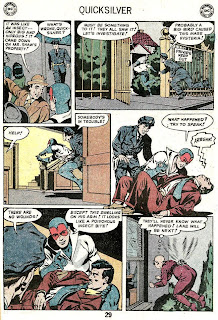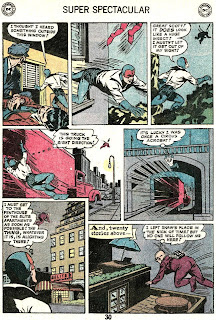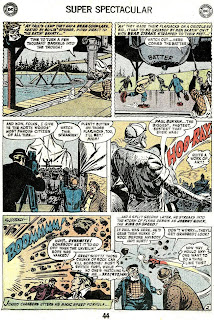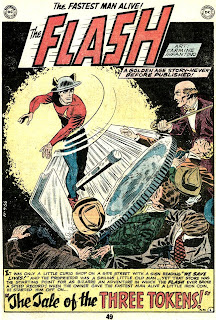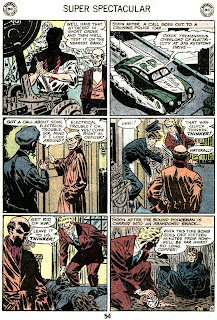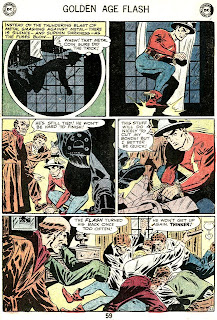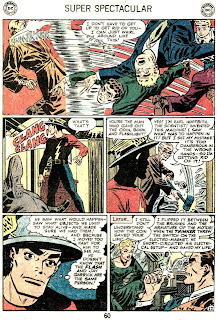
Number 692
Speed freaks!
A popular character like DC's The Flash was ripe for imitation. An early imitator from 1940 was Quicksilver, although the story below doesn't seem to show much in the way of super speed. It was toward the end of Quicksilver's run in National Comics #71, published by Quality. Don Markstein's Toonopedia has some observations on Quicksilver:
. . . There was no explanation of how he got his super power or why he put on a costume and mask to fight crime.. . . he also didn't have a personal life or even a name other than Quicksilver (unless you count "The Laughing Robin Hood", which is what newspapers sometimes called him), and was never seen out of costume. He lived with his young Chinese servant, Hoo Mee, in a cave, fitted out with living quarters and a chemical lab, in Oakwood Park, which was located in an unnamed urban area.
This particular story was drawn in fine fashion by Dan Zolnerowich.
Johnny Quick was a knockoff of the Flash by DC Comics, themselves. Johnny was the creation of Mort Weisinger. Johnny said a magic formula for his speed. This episode is drawn by comic book journeyman Ralph Mayo. Again, from Toonopedia:
Johnny's real name was Johnny Chambers. An orphan, he'd been raised by a family friend, Professor Ezra Gill, a scientist who dabbled in Egyptology in his old age. In translating an ancient scrap of papyrus, Gill discovered a "speed formula", capable of bestowing blinding speed on its user. He considered himself past the stage of life where such a thing would be useful to him, and so passed it on to Johnny, to be used in the cause of justice.It wasn't a "formula" in the usual sense, but worked more like a magic word. By saying "3X2(9YZ)4A", Johnny gained the power of super speed — to the point where he could even fly short distances, which may not have made sense aerodynamically but didn't seem to bother comic book readers of the time. Saying "Z25Y(2AB)6" would return him to normal.
The final story is a previously unpublished story of The Flash. They're scanned from the 100-page Super Special, The Flash #214, from 1972.


